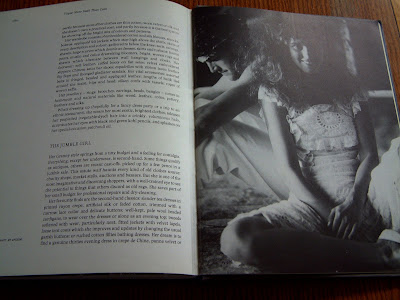
Yesterday’s post couldn’t have been more prescient. Several topics have been on my mind recently: the pace of modern technology and the emotional past amongst them. Thankfully, instead of me banging on about them, I’ve chanced almost magically upon writers who mirror my own thoughts, but in a far more eloquent way ...
I read
this on Friday: ‘In an abundant society where people have laptops, cell phones, iPods and minds like empty rooms, I still plod along with books’. Harper Lee.
Jeanette Winterson’s monthly
column (thankfully back on track) continued the theme. It also introduced me to the wonderful term, ‘the old present’. It ties in with an extract I’d typed up for this blog from a
book called
In Buddha’s Kitchen, but had failed to post. I’d found the passage striking because over the past year or so, anger has quietly slipped away from my life, whereas previously it had been a dominant, albeit quiet, presence (it’s perhaps simplistic, but to my mind, there are loud, angry people and the quiet variety).
Of course, I will no doubt experience sustained anger again, but whilst some might scoff at the correlation, to me it’s unarguable: the purer and more conscious my diet, the purer my moods.
‘I think a lot about anger these days. How the commercial kitchen used to run on rage. How appropriate it felt to indulge in tirades about what should or shouldn’t be done. I’d seen anger as a divine dance, something I’d earned a right to express. Besides, hadn’t I worked my way up from kitchen help by being unrelentingly precise and demanding in every detail? Hadn’t I made a point of never faltering in my zealous control of both the process and the product? Anger released adrenaline, energy, force. It kept the kitchen going. But ... I discovered that it has a big price tag hanging from its toe. People dislike you afterward, so you have to keep feeling angry, keep feeding it, keep pushing that energy outward in order not to wind up with the letdown, not to take in the effects of your anger on other people.
... once said that when someone gets angry at you, it's as if they were shooting arrows. If you respond with more anger, it is as if you picked up the arrows that fell at your feet and proceeded to stab yourself over and over.
A cook isn’t necessarily angry, but a chef is almost always furious on some level. Why? Control and perfection. Professional entitlement. And what happens to all of this anger in the kitchen at a Buddhist centre? To begin with, it starts to feel like damage rather than privilege. I would track the impact of anger, follow its effects on myself and others. I noted my racing heart, narrowed eyes, intense concentration outward onto something that others, they, were doing wrong. An inner dialogue raged over flaws, the rightness of my position, my method, my perfect food, my idea of how a dish should look, should taste. In short, I concentrated on myself, my own assumptions. I would take what was inside my head, project it outward – reify it- think it was real in itself. I’m right, they are wrong. Puff, puff. But the centre of energy still raged on inside my own being.
That in itself, I came to realize, isn’t the whole problem. When I engage with anger, nothing else can happen. Nothing. No love. No joy. Only rage. And it feeds itself. It comes in waves, say the psychologists. The first wave of anger tends to be fairly mild, but then, after we’ve pumped it up a bit, after we’ve fanned the flames with words and memories of earlier outrages, it becomes stronger, deeper, meaner.
I soon found that getting in touch with rage as a source of power, as the self-help books advise, doesn’t work except in the very short term. When I really began to watch the effects of my words, I saw that anger couldn’t do me or anyone else a bit of good ...’.
In the cutting down of my internet time and the turning off of my mobile (in truth my mobile has, for the most part, been
off for the past decade) I’ve been somewhat dreamily contemplating my relationship with old clothes (vintage is perhaps a little
rarefied for the odd kit I accumulate). More thoughts on that soon ... perhaps even some favourite raw dips too.






